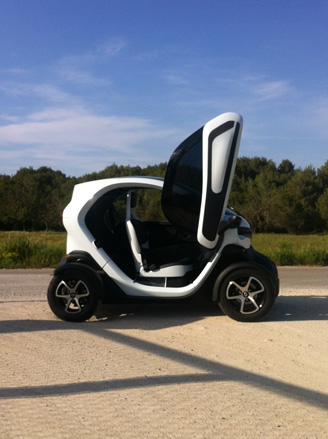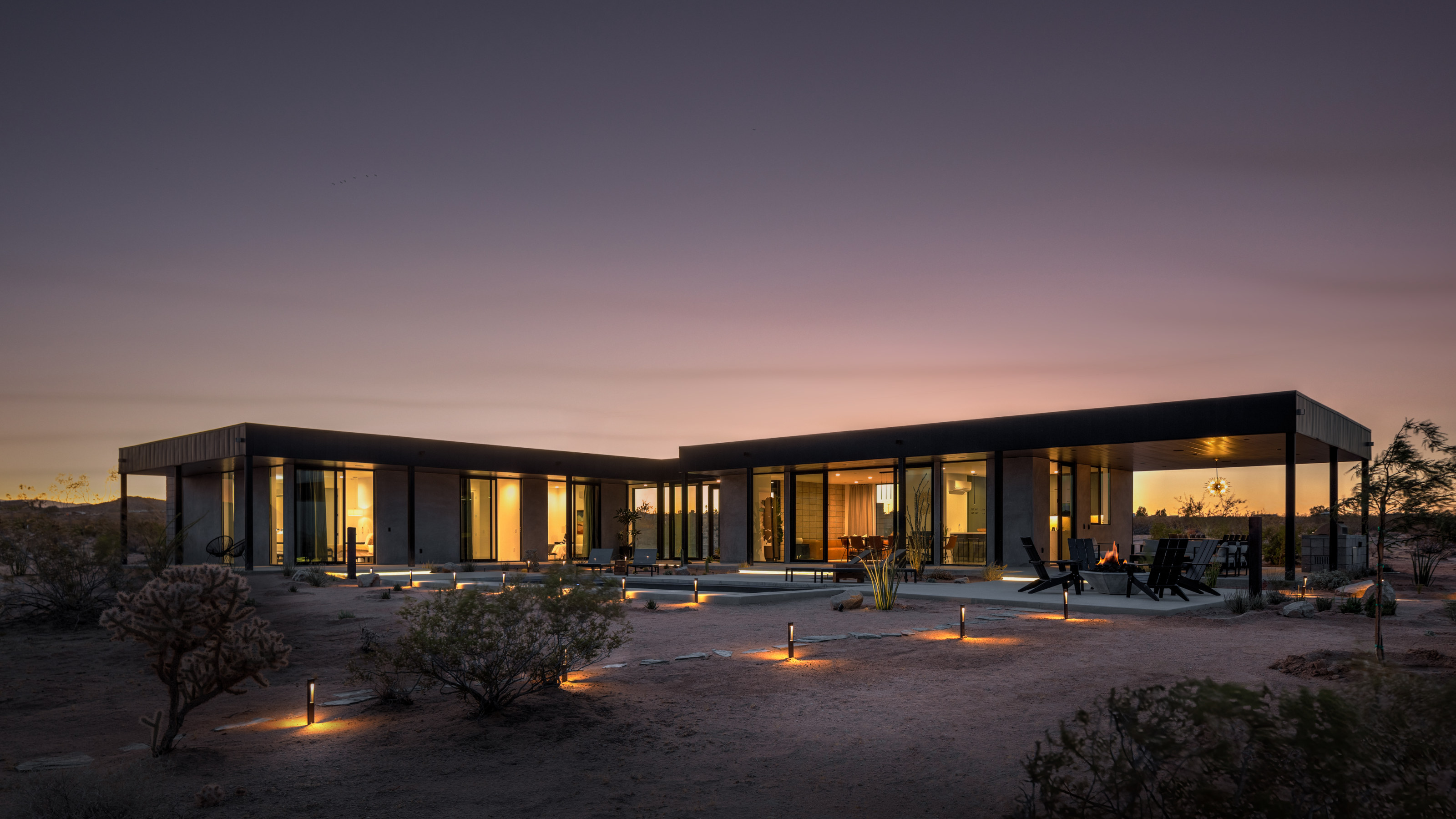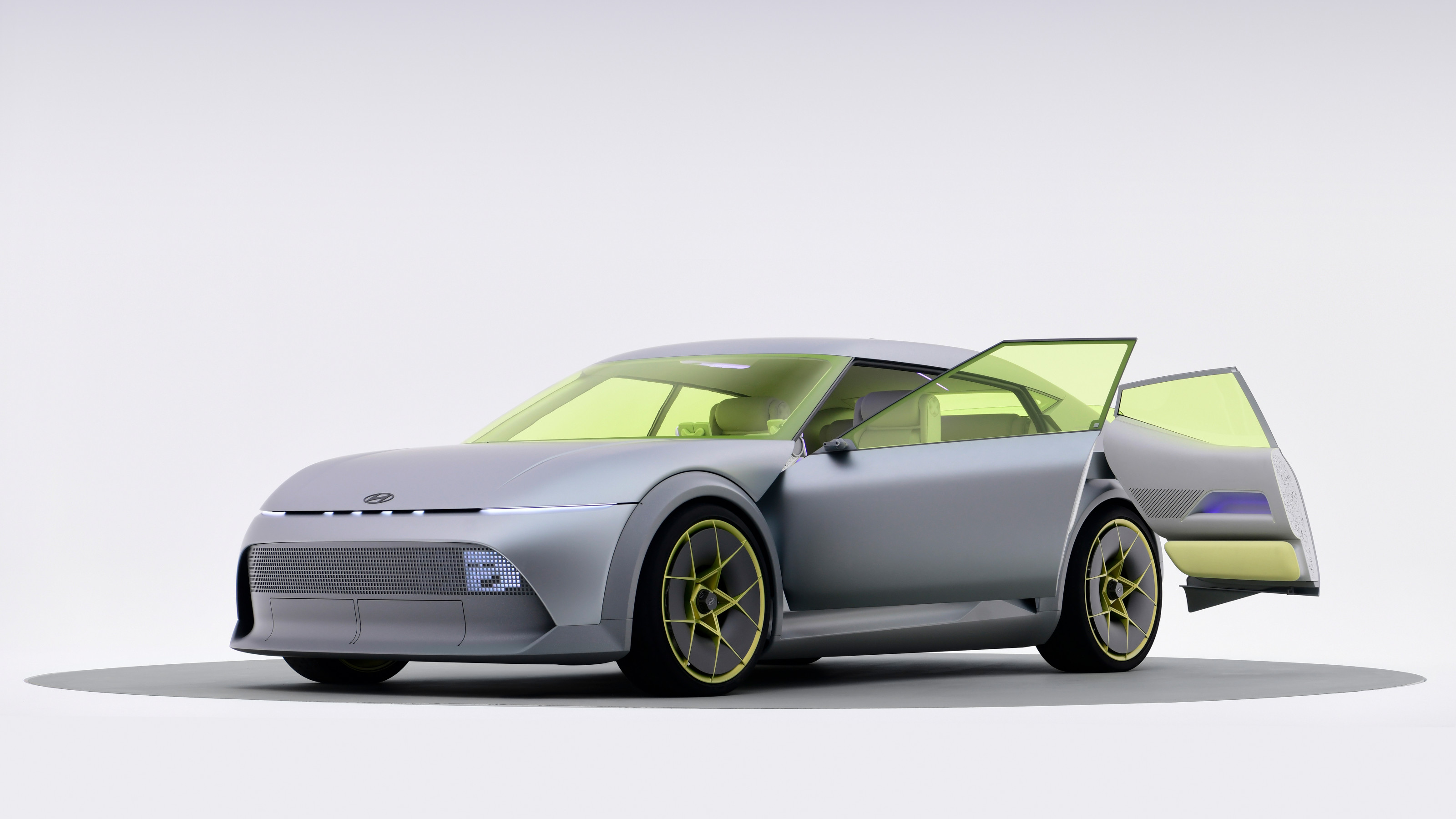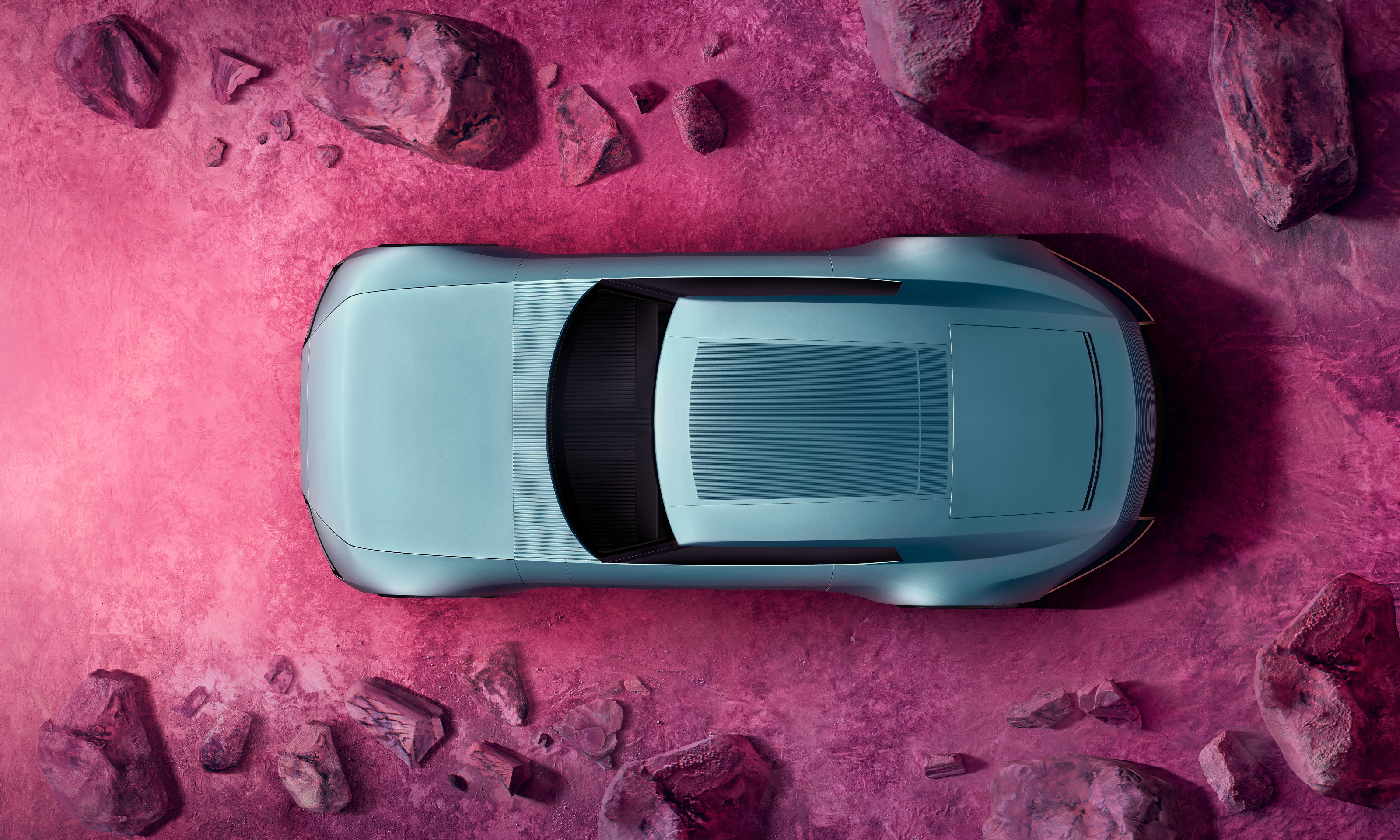Renault adds to its stable of zero-emission electric cars with the Twizy

The sight of a dozen Renault Twizys snaking along Ibiza's mountain roads was all that was needed to distract the sun worshipers from their beachy reveries during a recent presentation. The tiny rolling pods were like props from a sci-fi film. Even Renault has taken to referring to them as UDOs, or Unidentified Driving Objects.
This being Ibiza, though, the attention was positive - the sunshine and chilled vibe complementing a non-conformist car. Twizy may not be so readily accepted on the more self-conscious roads of Europe's capitals, where it was designed to get traffic moving again, but here it proved a perfect run-around.
Twizy is the latest model in Renault's family of zero-emission (ZE) electric cars that already include the Fluence, Kangoo and, later this year, the Zoe. At just 2.34m by 1.24m, the two-seater quadricycle is available with or without doors; the scissor doors only partially enclose the car in any case. The more powerful of the two models accelerates to 28mph in six seconds and offers a top speed of just over 50mph (we managed 53mph going downhill).
The battery promises a 62-mile (100km) range in eco-mode and takes 3.5 hours to charge - the bright blue cord that fits neatly into the nose works with any standard 220V outlet. This makes it ideal for short distance travel, but in apartment-dwelling cities like London and Paris, charging the Twizy won't be such a breeze. As with its other ZE vehicles, Renault will lease out the battery on a monthly subscription.
Renault has shown restraint by keeping Twizy's gadgety look uncluttered, almost innocent. The scissor doors give it a tongue-in-cheek futuristic look, lifting up without effort or noise. The driver can see the road beneath his feet thanks to transparent plastic in the floor. The absence of windows creates a semi-open-air drive cocooned by Renault's safety features.
Seats are hard and upright, befitting a commuting machine, and the seatbelts wrap around from both sides. The compact rear seat requires some agility to squeeze into, but once in it's a snug fit - and quite fun for a passenger. Sadly lacking is any substantial storage space, just two three-litre bins on either side of the steering wheel and a further 31 litres behind the passenger seat.
Back in 2001, as Toyota was rolling out its Prius to unprecedented kudos and market share, Renault introduced its eccentric Avantime, a sales disaster but a cult in the making. This is Renault's second chance. While other carmakers have prototyped urban pods, the French marque is the first to bring an all-electric into mainstream production. With DJ David Guetta as its brand ambassador, it's clearly aimed at young first-time buyers, particularly in markets where smaller engines can be driven without a licence. It's this market that has turned its back on the traditional planet-polluting, ego-enhancing automobile, and Renault hopes to tap into that.

Only 2.34m by 1.24m, Twizy is a two-seater quadricycle, Renault's latest zero-emission (ZE) electric car

It is available with or without doors

The lightweightscissor doors give the car a futuristic feel. They lift up in the air without any effort or noise

The scissor doors only partially enclose the car

Other manufacturers have made similar urban-pod prototypes, but Renault is the first to bring its all-electric machine into mainstream production

It takes 3.5 hours to charge the battery for a 62 mile (100km) range in eco-mode. The bright blue cord fits neatly into the car’s nose and works with any standard 220V electrical outlet, making it ideal for short-distance travel
Receive our daily digest of inspiration, escapism and design stories from around the world direct to your inbox.
A writer and editor based in London, Nargess contributes to various international publications on all aspects of culture. She is editorial director on Voices, a US publication on wine, and has authored a few lifestyle books, including The Life Negroni.
-
 Take a tour of the 'architectural kingdom' of Japan
Take a tour of the 'architectural kingdom' of JapanJapan's Seto Inland Sea offers some of the finest architecture in the country – we tour its rich selection of contemporary buildings by some of the industry's biggest names
-
 JW Anderson’s new London store is an inviting emporium of fashion, art and homeware
JW Anderson’s new London store is an inviting emporium of fashion, art and homewareThe idea of curation is at the heart of Jonathan Anderson’s refreshed vision for his eponymous label, one encapsulated in the new Sanchez Benton-designed store on Pimlico Road – a place where the designer’s passions and influences converge
-
 Rent this dream desert house in Joshua Tree shaped by an LA-based artist and musician
Rent this dream desert house in Joshua Tree shaped by an LA-based artist and musicianCasamia is a modern pavilion on a desert site in California, designed by the motion graphic artist Giancarlo Rondani
-
 All hail the compact new Renault Twingo E-Tech – the city car is back in style
All hail the compact new Renault Twingo E-Tech – the city car is back in styleRenault continues to pay homage to its heritage by combining it with 21st-century technology. The new Twingo E-Tech is another winner
-
 Fancy owning a piece of French automotive history? Bid in The Renault Icons Auction
Fancy owning a piece of French automotive history? Bid in The Renault Icons AuctionRenault is paring back its substantial collection of historic automobiles by auctioning off duplicate models. We present 14 of the finest lots
-
 All the new electric cars and concepts revealed at Munich’s IAA Mobility 2025
All the new electric cars and concepts revealed at Munich’s IAA Mobility 2025Munich’s alternative motorshow is now in its third iteration, combining a traditional exhibition space with a conference and large-scale public activations on the streets of the city
-
 The top 10 concept cars of 2024, as selected by Wallpaper’s Transport Editor
The top 10 concept cars of 2024, as selected by Wallpaper’s Transport EditorWe round up our favourite forays into futuristic design with this collection of concepts and design studies showcasing the transport of tomorrow
-
 Renault celebrates new R4 EV and electric mobility with TheArsenale and four French start-ups
Renault celebrates new R4 EV and electric mobility with TheArsenale and four French start-upsRenault's '4 Movements' accompanied the R4 E-Tech at the 2024 Paris Motor Show; the clutch of sleek machines will bring innovative electrification to air, sea and water
-
 Ora-ïto transforms the Renault 17 into a futuristic yet retro-tinged vision
Ora-ïto transforms the Renault 17 into a futuristic yet retro-tinged visionThe R17 electric restomod x Ora-ïto is the fourth in Renault's series of designer-led reimaginings of iconic models from its past. We think it's the best of the lot
-
 The new Renault 5 E-Tech’s design secrets and designer dreams revealed
The new Renault 5 E-Tech’s design secrets and designer dreams revealedWallpaper* talks to Renault’s Laurens van den Acker and Gilles Vidal about how they shaped the eagerly awaited Renault 5 E-Tech
-
 The return of the Geneva Motor Show (to Geneva) as a place for global debuts
The return of the Geneva Motor Show (to Geneva) as a place for global debutsThe Geneva Motor Show is back. After 2020’s pandemic cancellation and an ‘exported’ event in Qatar in 2023, the organisers of GIMS 2024 had their work cut out to stay relevant. Here are our highlights